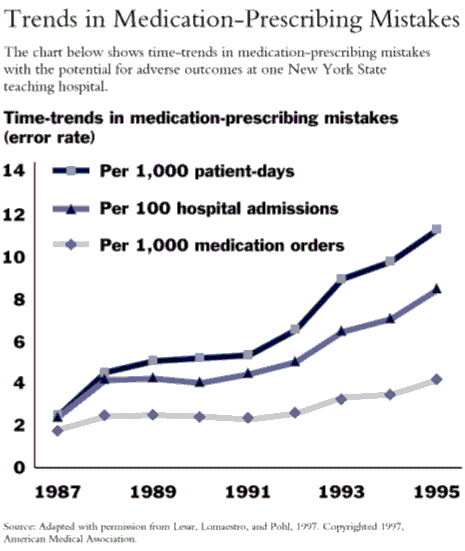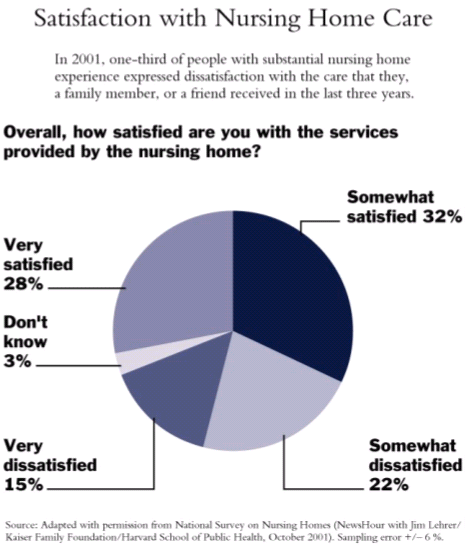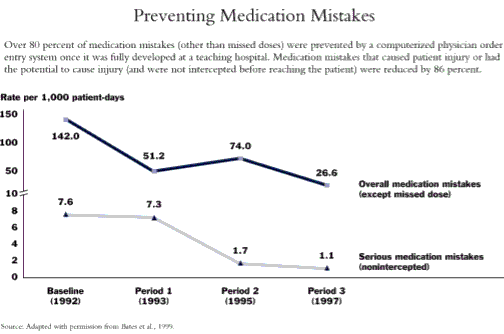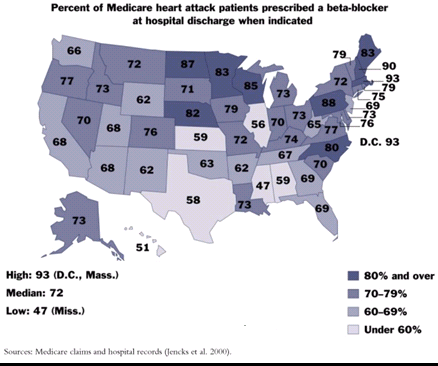The Commonwealth Fund today released a new chartbook that is a first-of-its kind portrait of the state of health care quality in the United States. Based on over 150 published studies and reports of quality of care, the chartbook contains a series of 54 charts and accompanying analysis that documents serious gaps on many crucial health quality dimensions. Quality of Health Care in the United States: A Chartbook, by Sheila Leatherman, Adjunct Professor, University of North Carolina School of Public Health and Douglas McCarthy, Research Associate, Argus Insights, aims to provide an authoritative, comprehensive, and useful resource for policymakers, providers, and the public about quality of care. It also includes a unique section on successful examples of collaborative projects that have led to improvement.

- Childhood immunizations - Over one-quarter (27%) of young children age 19 to 35 months were not fully up-to-date on all recommended doses of five key vaccines nationally in 2000. Immunization rates range from a low of 64 percent in Texas to a high of 83% in Iowa and North Carolina.
- Breast cancer screening - The rate of women age 50 and over receiving a mammogram in the past two years more than doubled from 1987 (27%) to 1998 (69%). However, rates are still lower than they should be.
- Overuse of antibiotic for sore throat - Widespread over-prescribing has led to the emergence of antibiotic-resistant bacteria. Although the rate of use of antibiotics to treat adults with sore throats has declined, from 77% in 1989 to 57% in 1999, rates are still higher than where they appropriately should be-between 11 and 33 percent-if clinical guidelines were followed.
- Beta-blocker medication to prevent recurrent heart attack - Only three-quarters of Medicare heart attack patients received beta-blocker medication when indicated to prevent recurrent heart attacks. Rates ranged from a low of 47 percent in Mississippi to 93 percent in Massachusetts and the District of Columbia.
- Increase in medication mistakes - From 1987 to 1995, rates of medication-prescribing mistakes with the potential for adverse outcomes more than tripled in proportion to hospital admissions (from 2.4 to 8.4 per 100). This data, from a teaching hospital, may be representative of a wider trend suggesting that medication mistakes are increasing along with the intensity of therapy.
- Unsafe or inappropriate prescribing for the elderly - Six studies during the past decade show that between 14 and 24 percent of elderly patients were prescribed medications that could potentially cause harm in or have questionable effectiveness for the elderly.
- Effect of being uninsured on access to primary care - Uninsured working-age adults were up to three times more likely (27%) to report not seeing a physician when needed and not receiving recommended preventive services due to cost than those with public or private insurance coverage (8%) during 1997-1998. Those who were uninsured for less than one year were also more likely to report difficulty obtaining access to primary care (22%).
- Effect of regular source of health care on access to preventive care - Adults with a regular source of care were two to five times more likely to receive preventive care-such as mammograms, pap tests, and colorectal cancer screening-than those without a regular health care provider in 1998.
- Timely initiation of prenatal care - The percentage of women receiving prenatal care has improved over the past two decades, reaching 83 percent in 1999. However, while rates for women who are members of racial and ethnic minority groups have improved, due at least in part to Medicaid expansions in recent years, they are still below rates for white women (74% for African American and Hispanic women, and 70% for Native American women vs. 88% for white women).
- Perceptions of health care quality - Little more than half (53%) of the American public thinks that the quality of health care in the U.S. is good or excellent. Nearly three of five (57%) of U.S. physicians say that their ability to provide quality health care has gotten worse in the past 5 years.
- Public perceptions of the health care system - While a majority of people said that hospitals (72%) and their own physician (84%) were doing a good job, fewer had confidence in the leaders of medicine (44%) and think health insurers are doing a good job (39%). Three of five Americans (59%) think managed care harms quality.
- Satisfaction with nursing home care - Over one-third (37%) of people with substantial nursing home experience expressed dissatisfaction with the care that they, a family member, or a friend received in the last three years.

- Racial/ethnic disparity in preventive care - Blacks and Hispanics were less likely than whites to receive some preventive care services. Compared to whites (69%), the flu shot vaccination rate in adults 65 and over was 18 percentage points lower for African Americans (51% vs. 69%) and 13 points lower for Hispanics (56% vs. 69%). This finding is striking because Medicare covers this preventive service equally for all elderly beneficiaries.
- Racial disparity in use of invasive heart procedures - Black patients with coronary artery disease were less likely than white patients to receive procedures that restore blood flow to the heart muscle. Seventy percent of white patients with severe disease received either angioplasty or bypass surgery, compared with 56% of black patients with severe disease. In the study, differences in patients' insurance status did not account for the difference in treatment. Blacks were 18% more likely than whites to have died after five years, suggesting that they were undertreated.
- Pain management - Among cancer patients visiting 54 outpatient clinics, 59 percent of minority patients and 38 percent of white patients had inadequate pain management based on an assessment of their pain severity and the medication prescribed to treat it (if any).
- Improving immunization rates - Patients who received reminders about upcoming or overdue immunizations were two-and-a-half times more likely to be vaccinated, or up-to-date on their vaccinations, than those who did not. With the effectiveness of patient reminders clearly demonstrated, wider dissemination is called for. Advanced automated billing systems and immunization registries are making reminder systems increasingly feasible and affordable for more physicians. It is estimated that reminders cost $7 to $63 per child vaccinated; the question is who should pay for them.
- Improving diabetes management - The quality of diabetes care among Medicare patients improved when six managed health care plans in Arizona collaborated with the state's Medicare Peer Review Organization on quality improvement. After one year, the proportion of patients with their blood sugar under control rose from 40 percent of patients to 62 percent.
- Preventing serious medication mistakes - Medication mistakes that caused patient injury or had the potential to cause injury (and were not intercepted before reaching the patient) were reduced by 86 percent (from 7.6 per 1,000 patient days to 1.1 per 1,000 patient days) by a computerized physician order entry system at a teaching hospital.

- Enhancing knowledge - Evidence-based guidelines must be incorporated in daily practice to help physicians determine the best course of treatment. Systematic reviews of the literature, guidelines, and computerized practice prompts need to be routinely implemented.
- Making information on quality available - More comprehensive and systematic reporting on quality performance at all levels of the health care system-national, state, health plan, and individual provider-are needed.
- Improving quality through coverage - Improving rates of health insurance coverage is a prerequisite to improving access and quality of care. Rewarding quality - Attempts to exploit consumer market forces have had only a marginal effect to date and the need to implement incentives-either financial or non-financial-is increasingly recognized. For example, payment should be linked to the quality of the care, when feasible.



